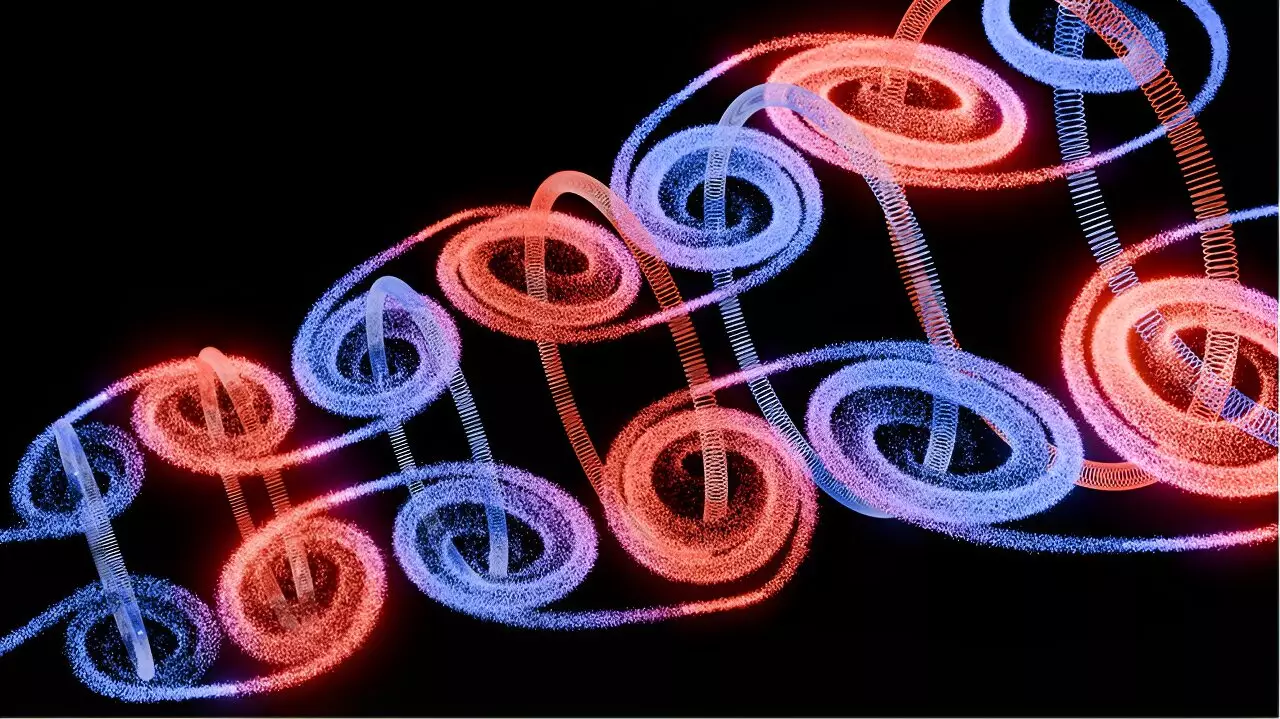In a groundbreaking study published in Nature Communications, physicists from Singapore and the UK have unveiled an optical analog of the Kármán vortex street (KVS). This optical KVS pulse showcases intriguing parallels between fluid transport and energy flow of structured light. Lead author Yijie Shen from Nanyang Technological University highlights the significance of their findings and the potential applications of this new discovery in various fields.
The study introduces a novel type of light pulse with a field structure that closely resembles a von Kármán vortex street. This vortex street pattern is commonly observed in fluid and gas dynamics, responsible for phenomena such as the ‘singing’ of suspended telephone lines in the wind. The structured light pulses exhibit a robust topological structure reminiscent of skyrmions in condensed matter.
What sets the nondiffracting supertoroidal pulses (NDSTPs) apart from previous optical skyrmionic beams and pulses is their ability to maintain their skyrmionic field configuration without being limited by diffraction. This unique characteristic allows the pulses to persist over arbitrary distances during propagation, opening up new possibilities for applications in light-matter interactions, super resolution microscopy, and metrology.
The study predicts that NDSTPs could inspire a range of potential applications, including directing energy channels for information transfer, studying electromagnetic skyrmionic fields’ propagation dynamics, and leveraging topological features for long-distance information transfer. Furthermore, the deeply subwavelength singularities of these pulses hold promise for applications in metrology and the spectroscopy of toroidal excitations in matter.
The intersection of science and the humanities is evident in the historical and cultural references to Kármán vortex streets. From a painting at the Church of St Dominic in Bologne, Italy, to the engineering failures of the Tacoma Narrow Bridge, these vortex streets have left a lasting impact on both scientific research and human experiences. Theodore von Kármán’s inspiration drawn from art to study vortex streets showcases the interconnectedness of various disciplines.
The study on the optical analog of Kármán vortex streets represents a significant advancement in the field of physics, offering new insights into the behavior of structured light and its applications in diverse areas. By drawing parallels between fluid dynamics and optical phenomena, the researchers have expanded our understanding of vortex streets and their potential practical applications. This innovative research paves the way for further exploration and utilization of NDSTPs in various scientific and technological domains.


Leave a Reply
You must be logged in to post a comment.